Monthly Archives: March 2018
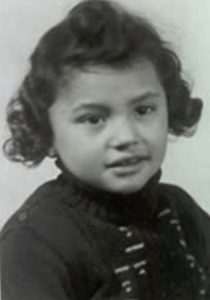 Yesterday, I had the unique opportunity to listen to a Holocaust survivor speak at a seminar. Her name was Inge Auerbacher, and she was an amazing woman. Inge was the last Jewish child born in Kippenheim, a village in South Western Germany located at the foot of the Black Forest. She was the only child of Berthold (1898–1987) and Regina Auerbacher (née Lauchheimer, 1905–1996). Both of her parents came from observant Jewish families who had lived for many generations in Germany. Her father proudly served in the German army, but when the Nazis came for them, his loyal service meant nothing to them. They were Jewish, and that fact condemned them to the concentration camps. Loyal service could not compensate for Hitler’s crazed hatred of the Jewish people.
Yesterday, I had the unique opportunity to listen to a Holocaust survivor speak at a seminar. Her name was Inge Auerbacher, and she was an amazing woman. Inge was the last Jewish child born in Kippenheim, a village in South Western Germany located at the foot of the Black Forest. She was the only child of Berthold (1898–1987) and Regina Auerbacher (née Lauchheimer, 1905–1996). Both of her parents came from observant Jewish families who had lived for many generations in Germany. Her father proudly served in the German army, but when the Nazis came for them, his loyal service meant nothing to them. They were Jewish, and that fact condemned them to the concentration camps. Loyal service could not compensate for Hitler’s crazed hatred of the Jewish people.
Inge had barely started school when her family as deported to Czechoslovakia and sentenced to the Terezin camp. When she and her parents went in, Inge was seven years old when she went into Terezin. She would be there for three years. I will not  say she called it home for three years, because it was definitely not a home. Inge tells of the companions she always knew would be there…the rats, mice, fleas, and bed bugs. The prisoners were allowed two showers a year…yes, I said a year. No wonder those companions hung around. Another occasional companion was lice which meant shaved heads to make removal easier. All of this was horrible, but it was the least of the nightmare. The guards gave brutal beatings…especially the women guards. The scientists performed experiments on the people, and they were given very little to eat. They were doing everything they could to kill their prisoners. Nevertheless, it was all too slow for Hitler.
say she called it home for three years, because it was definitely not a home. Inge tells of the companions she always knew would be there…the rats, mice, fleas, and bed bugs. The prisoners were allowed two showers a year…yes, I said a year. No wonder those companions hung around. Another occasional companion was lice which meant shaved heads to make removal easier. All of this was horrible, but it was the least of the nightmare. The guards gave brutal beatings…especially the women guards. The scientists performed experiments on the people, and they were given very little to eat. They were doing everything they could to kill their prisoners. Nevertheless, it was all too slow for Hitler.
A total of 140,000 people were shipped to Theresienstadt concentration camp near Terezin; 88,000 were sent primarily to the gas chambers in Auschwitz, and 35,000 died of malnutrition and disease in Terezin. Of the 15,000 children imprisoned in 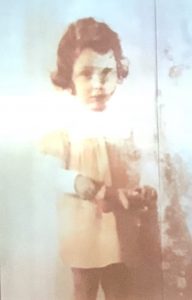 Terezin, Inge and her parents were among the 1% that survived. Her childhood friends, especially her best friend, Ruth lost her life at Auschwitz. Ruth’s father was half Christian and half Jewish. She was raised Christian, but it didn’t make a difference. She and her family were executed for their Jewish heritage. Poor Ruth was deported to Auschwitz in one of the last transports. Ruth and the other children marched with their parents to their final destination, not knowing what was to come. They were told they were going to the showers, but it was the gas chambers, and their parents would not tell them otherwise. It would have been far too cruel. For me, the picture that Inge found years later, of Ruth as a little girl, has stayed vividly in my mind. She was a sweet, innocent little girl, who had done nothing wrong, but her life was taken away from her because she was pat Jewish…because Hitler hated the Jewish people. Hate…an ugly word. Inge says that this type of treatment happens when people lose their humanity. She would tell you, “Never lose your humanity.”
Terezin, Inge and her parents were among the 1% that survived. Her childhood friends, especially her best friend, Ruth lost her life at Auschwitz. Ruth’s father was half Christian and half Jewish. She was raised Christian, but it didn’t make a difference. She and her family were executed for their Jewish heritage. Poor Ruth was deported to Auschwitz in one of the last transports. Ruth and the other children marched with their parents to their final destination, not knowing what was to come. They were told they were going to the showers, but it was the gas chambers, and their parents would not tell them otherwise. It would have been far too cruel. For me, the picture that Inge found years later, of Ruth as a little girl, has stayed vividly in my mind. She was a sweet, innocent little girl, who had done nothing wrong, but her life was taken away from her because she was pat Jewish…because Hitler hated the Jewish people. Hate…an ugly word. Inge says that this type of treatment happens when people lose their humanity. She would tell you, “Never lose your humanity.”

 In about 1985, I began coaching youth bowling at Eagle Bowl, in Casper Wyoming. As I set up the teams for the year, I decided to team my two daughters, Corrie Schulenberg (Petersen) and Amy Schulenberg (Royce) with two little sisters named Jaime Morton (Moler) and Jackie Morton. As it turned out, that team would be more than friends for life…because unbeknownst to me at the time, those little girls were 3rd cousins, a fact I found out by accident, when I mentioned the Morton family to my mom, Collene Spencer, who knew that the Morton girls’ grandmother, Margaret was my mother’s cousin. The knowledge of the family connection made the little girls’ team even more special. The girls would bowl together all through their youth bowling years. Those years went by so fast, and I was terrible at taking pictures of anyone but my own kids, so the memories I have of those precious years live only in my mind’s memory files now. Fast forward to adulthood for the four little girls. Through the years, our families remained close and my husband, Bob and I bowl with the Morton family on a league to this day. Our girls bowled the league too for a time, but the friendship…the cousinship…that was forever, and will be forever.
In about 1985, I began coaching youth bowling at Eagle Bowl, in Casper Wyoming. As I set up the teams for the year, I decided to team my two daughters, Corrie Schulenberg (Petersen) and Amy Schulenberg (Royce) with two little sisters named Jaime Morton (Moler) and Jackie Morton. As it turned out, that team would be more than friends for life…because unbeknownst to me at the time, those little girls were 3rd cousins, a fact I found out by accident, when I mentioned the Morton family to my mom, Collene Spencer, who knew that the Morton girls’ grandmother, Margaret was my mother’s cousin. The knowledge of the family connection made the little girls’ team even more special. The girls would bowl together all through their youth bowling years. Those years went by so fast, and I was terrible at taking pictures of anyone but my own kids, so the memories I have of those precious years live only in my mind’s memory files now. Fast forward to adulthood for the four little girls. Through the years, our families remained close and my husband, Bob and I bowl with the Morton family on a league to this day. Our girls bowled the league too for a time, but the friendship…the cousinship…that was forever, and will be forever.
Yesterday, at 12:30pm, I guess I’ll always remember the time, I received some news that deeply saddened all of us. One of the girls, Jackie Morton, just 37 years old, had passed away. She had knee surgery, and the doctors suspect that a blood clot was the cause of her passing. Everyone who knew Jackie will remember her bubbly personality, and 
 her smiling face. She was always fun to be around, and that is why she had such a great group of friends, all of whom will miss her greatly. She truly cared about her friends and what was going on in their lives. Jackie was also a hard worker, and often worked overtime, missing bowling because she was needed elsewhere. She did what she needed to do, because she was loyal and dedicated to her job.
her smiling face. She was always fun to be around, and that is why she had such a great group of friends, all of whom will miss her greatly. She truly cared about her friends and what was going on in their lives. Jackie was also a hard worker, and often worked overtime, missing bowling because she was needed elsewhere. She did what she needed to do, because she was loyal and dedicated to her job.
Jackie and her sister, Jaime have been very close all their lives. They were far closer that just sisters. They loved spending time together, going to concerts, vacations together, and of course, the precious family time that the whole family cherished. One of the defining moments in Jackie’s life was the moment she became an aunt. Jackie loved being an aunt, and her nephew, Kaleb, and nieces, Kielei and Haley brought such joy to her life. She attended their activities, and considered them her treasure. Truly, her whole family was Jackie’s treasure. Not a day went by that she wasn’t talking to them, spending time with them, or thinking of them. She never took them for granted. And they never took her for granted either. The family was very close, including aunts and uncles and grandparents. Bowling nights always included Aunt Renae and Uncle Mitch Berlinger, and various other family members, especially 
 grandparents often came to watch and cheer them on. Those were good times that will always be treasured in the family’s memories.
grandparents often came to watch and cheer them on. Those were good times that will always be treasured in the family’s memories.
Sadly, and far too soon Jackie has left us now, and entered into Heaven. Our hearts are broken at her passing. The world lost a little bit of the sunshine it had, with Jackie’s passing. Our minds still can’t wrap themselves around the fact that our beautiful, vibrant, loving, sweet Jackie is gone. Her family and friends will forever feel the empty space she has left behind. Jackie, we love you and we will miss you so very much.
 First chronicled by the famous western writer, Zane Grey, in his 1934 novel The Code of the West, no “written” code ever actually existed. However, the hardy pioneers who lived in the west were bound by these unwritten rules that centered on hospitality, fair play, loyalty, and respect for the land. These days, little of that code remains, or so it seems. These days, the more someone can get away with, he better they seem to like it. That just wasn’t the case for the people of thee old West. They needed to know that they could count on their neighbors, friends, and yes, even strangers
First chronicled by the famous western writer, Zane Grey, in his 1934 novel The Code of the West, no “written” code ever actually existed. However, the hardy pioneers who lived in the west were bound by these unwritten rules that centered on hospitality, fair play, loyalty, and respect for the land. These days, little of that code remains, or so it seems. These days, the more someone can get away with, he better they seem to like it. That just wasn’t the case for the people of thee old West. They needed to know that they could count on their neighbors, friends, and yes, even strangers
Ramon Adams, a Western historian, explained it best in his 1969 book, The Cowman and His Code of Ethics, saying, in part: “Back in the days when the cowman with his herds made a new frontier, there was no law on the range. Lack of written law made it necessary for him to frame some of his own, thus developing a rule of behavior which became known as the “Code of the West.” These homespun laws, being merely a gentleman’s agreement to certain rules of conduct for survival, were never written into statutes, but were respected everywhere on the range.”
Though the cowman might break every law of the territory, state and federal government, he took pride in upholding his own unwritten code. His failure to abide by it did not bring formal punishment, but the man who broke it became, more or less, a social outcast. His friends “hazed him into the cutbacks” and he was subject to the punishment of the very code he had broken. Though the Code of the West was always unwritten, here is a “loose” list of some of the guidelines: Don’t inquire into a person’s past. Take the measure of a man for what he is today. Never steal another man’s horse. A horse thief pays with his life. Defend yourself whenever 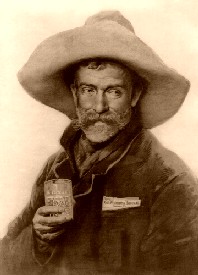 necessary. Look out for your own. Remove your guns before sitting at the dining table. Never order anything weaker than whiskey. Don’t make a threat without expecting dire consequences. Never pass anyone on the trail without saying “Howdy”. When approaching someone from behind, give a loud greeting before you get within shooting range. Don’t wave at a man on a horse, as it might spook the horse. A nod is the proper greeting. After you pass someone on the trail, don’t look back at him…it implies you don’t trust him. Riding another man’s horse without his permission is nearly as bad as making love to his wife. Never even bother another man’s horse. Always fill your whiskey glass to the brim. A cowboy doesn’t talk much; he saves his breath for breathing. No matter how weary and hungry you are after a long day in the saddle, always tend to your horse’s needs before your own, and get your horse some feed before you eat. Cuss all you want, but only around men, horses and cows. Complain about the cooking and you become the cook. Always drink your whiskey with your gun hand, to show your friendly intentions. Do not practice ingratitude. A cowboy is pleasant even when out of sorts. Complaining is what quitters do, and cowboys hate quitters. Always be courageous. Cowards aren’t tolerated in any outfit worth its salt. A cowboy always helps someone in need, even a stranger or an enemy. Never try on another man’s hat. Be hospitable to strangers. Anyone who wanders in, including an enemy, is welcome at the dinner table. The same was true for riders who joined cowboys on the range. Give your enemy a fighting chance. Never wake another man by shaking or touching him, as he might wake suddenly and shoot you. Real cowboys are modest. A braggart who is “all gurgle and no guts” is not tolerated. Be there for a friend when he needs you. Drinking on duty is grounds for instant dismissal and blacklisting. A cowboy is loyal to his “brand,” to his friends, and those he rides with. Never shoot an unarmed or unwarned enemy. This was also known as “the rattlesnake code”: always warn before you strike. However, if a man was being stalked, this could be ignored. Never shoot a woman no matter what.
necessary. Look out for your own. Remove your guns before sitting at the dining table. Never order anything weaker than whiskey. Don’t make a threat without expecting dire consequences. Never pass anyone on the trail without saying “Howdy”. When approaching someone from behind, give a loud greeting before you get within shooting range. Don’t wave at a man on a horse, as it might spook the horse. A nod is the proper greeting. After you pass someone on the trail, don’t look back at him…it implies you don’t trust him. Riding another man’s horse without his permission is nearly as bad as making love to his wife. Never even bother another man’s horse. Always fill your whiskey glass to the brim. A cowboy doesn’t talk much; he saves his breath for breathing. No matter how weary and hungry you are after a long day in the saddle, always tend to your horse’s needs before your own, and get your horse some feed before you eat. Cuss all you want, but only around men, horses and cows. Complain about the cooking and you become the cook. Always drink your whiskey with your gun hand, to show your friendly intentions. Do not practice ingratitude. A cowboy is pleasant even when out of sorts. Complaining is what quitters do, and cowboys hate quitters. Always be courageous. Cowards aren’t tolerated in any outfit worth its salt. A cowboy always helps someone in need, even a stranger or an enemy. Never try on another man’s hat. Be hospitable to strangers. Anyone who wanders in, including an enemy, is welcome at the dinner table. The same was true for riders who joined cowboys on the range. Give your enemy a fighting chance. Never wake another man by shaking or touching him, as he might wake suddenly and shoot you. Real cowboys are modest. A braggart who is “all gurgle and no guts” is not tolerated. Be there for a friend when he needs you. Drinking on duty is grounds for instant dismissal and blacklisting. A cowboy is loyal to his “brand,” to his friends, and those he rides with. Never shoot an unarmed or unwarned enemy. This was also known as “the rattlesnake code”: always warn before you strike. However, if a man was being stalked, this could be ignored. Never shoot a woman no matter what.
Consideration for others is central to the code, such as: Don’t stir up dust around the chuck wagon, don’t wake  up the wrong man for herd duty, etc. Respect the land and the environment by not smoking in hazardous fire areas, disfiguring rocks, trees, or other natural areas. Honesty is absolute – your word is your bond, a handshake is more binding than a contract. Live by the Golden Rule. “The Code of the West was a gentleman’s agreement to certain rules of conduct. It was never written into the statutes, but it was respected everywhere on the range.“ Ramon F. Adams
up the wrong man for herd duty, etc. Respect the land and the environment by not smoking in hazardous fire areas, disfiguring rocks, trees, or other natural areas. Honesty is absolute – your word is your bond, a handshake is more binding than a contract. Live by the Golden Rule. “The Code of the West was a gentleman’s agreement to certain rules of conduct. It was never written into the statutes, but it was respected everywhere on the range.“ Ramon F. Adams
As I read through these “codes,” I have to think just how sad it is that so little of that beautiful code is practiced these days, and how very sad that is.
 Anyone who lived through the 1960s knows about the Hippie Counterculture, or as we called it the Hippie Generation. It seems that every generation must be named. I wonder what the people who named Generation X would have called the Hippie Generation. In many ways they were much the same, with the exception of their clothes, anyway.
Anyone who lived through the 1960s knows about the Hippie Counterculture, or as we called it the Hippie Generation. It seems that every generation must be named. I wonder what the people who named Generation X would have called the Hippie Generation. In many ways they were much the same, with the exception of their clothes, anyway.
There was something that was unique, in my mind, to the Hippie Generation, and that was the Volkswagen Bus. I’m sure it was a coincidence that the VW Bus came out about the time that the whole “free love” ear was happening, but I would think that it was every parents nightmare, because it supplied a rolling motel room for kids on dates, and remember that the parents were pretty much against the whole “free love” thing. In fact, I’m quite sure it totally terrified them, because not only were their girls dating this guy was a rolling motel room, but this guy was…well, very different from the kind of man they had always hope their daughter would marry. My son-in-law, Kevin Petersen grew up around vans. His parents were at the right age to really be a part of the Hippie Generation, although I don’t know if they were really involved or not. They did love vans, however, and fixed theirs up to show.
The VW Bus, for it’s part, was the brainchild of Dutch businessman Ben Pon, an importer of the Volkswagen Beetles to the Netherlands. Pon saw a market for a small bus and in 1947 sketched out his concept. The bus went into production on March 8, 1950…technically before the Hippie Generation, so I suppose the Hippies adopted the VW Bus, and not the other way around. Known officially as the Volkswagen Type 2 (the Beetle was the Type 1) or the Transporter, the bus was a favorite mode of transportation for hippies in the United States during the 1960s and became an icon of the American counterculture movement. The bus eventually collected a number of nicknames, including the “Combi” (for combined-use vehicle) and the “Splittie” (for its split windshield); in Germany it was known as the “Bulli.” In the United States it was referred to by some as a hippie van or bus because it was used to transport groups of young people and their camping gear and other supplies to concerts and anti-war rallies. Some owners painted colorful murals on their buses and replaced the VW logo on the front with a peace symbol.
The Volkswagen Bus was only the second vehicle built by Volkswagen, a company whose history dates back to the 1930s Germany. In 1933, Adolf Hitler became chancellor of Germany and announced he wanted to build new roads and affordable cars for the German people. At that time, Austrian-born engineer Ferdinand Porsche (1875-1951) was already working on creating a small car for the masses. Hitler and Porsche later met and the engineer was charged with designing the inexpensive, mass-produced Volkswagen, or “people’s car.” In 1938, work began on the Volkswagen factory, located in what is now Wolfsburg, Germany. Full-scale vehicle  production didn’t begin until after World War II, however. In the 1950s, the Volkswagen arrived in the United States, where the initial reception was negative, due in part to the car’s historic Nazi connection as well as its small size and unusual rounded shape (which later led to it being dubbed the “Beetle”). In 1959, the advertising agency Doyle Dane Bernbach launched a groundbreaking campaign that promoted the car’s diminutive size as a distinct advantage to consumers, and over the next several years Volkswagen became the top-selling auto import in the United States. In 1972, the VW Beetle passed the Ford Model T as the world’s best-selling car, with over 15 million vehicles produced.
production didn’t begin until after World War II, however. In the 1950s, the Volkswagen arrived in the United States, where the initial reception was negative, due in part to the car’s historic Nazi connection as well as its small size and unusual rounded shape (which later led to it being dubbed the “Beetle”). In 1959, the advertising agency Doyle Dane Bernbach launched a groundbreaking campaign that promoted the car’s diminutive size as a distinct advantage to consumers, and over the next several years Volkswagen became the top-selling auto import in the United States. In 1972, the VW Beetle passed the Ford Model T as the world’s best-selling car, with over 15 million vehicles produced.
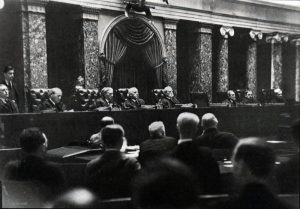 Have you ever seen a picture of a Supreme Court session? Probably not. Photography is banned in Supreme Court, and there are only two known photographs of the Supreme Court in session. Cameras have long been banned inside the courtroom, so the only two photos were captured many decades ago by people who snuck cameras in.
Have you ever seen a picture of a Supreme Court session? Probably not. Photography is banned in Supreme Court, and there are only two known photographs of the Supreme Court in session. Cameras have long been banned inside the courtroom, so the only two photos were captured many decades ago by people who snuck cameras in.
The first photo, shown above, was shot in 1932 by a German photographer named Erich Salomon. Salomon was hired by Fortune magazine to shoot images during a tour of America. The photographer decided to sneak a camera into the Supreme Court by faking that he had a broken arm so that he could hide his camera inside his sling. Salomon was able to snap a stealthy photo, which was later published in Fortune and touted as the first photo ever made showing the court in session. That as a pretty sneaky way to get a camera into the courtroom, and while I don’t know how security is at the Supreme Court these days, but it wouldn’t surprise me to see a guard looking inside a sling to see what someone was trying to bring inside.
I can understand how a camera could be a problem, especially with old cameras. Many of them required a flash for indoor pictures, and having flashes going off all the time would be very distracting. Also, with today’s phones and cameras, videos could be taken easily, with sound that could let people outside the courtroom know about what was going inside the courtroom.
Nevertheless, five years later, in 1937, a young woman managed to take a second photo of the Supreme Court in session. This second photo was published in the June 7, 1937, edition of Time magazine, within an article titled Judiciary: Farewell Appearance. Time magazine wrote at the time, that the photo was taken by “an enterprising amateur, a young woman who concealed her small camera in her handbag, cutting a hole through which the lens peeped, resembling an ornament. She practiced shooting from the hip, without using the camera’s finder which was inside the purse.” The photographer was never named and remains a mystery to this day. The photo was also the first and only time all 9 justices of the court appeared in the same photo in session. There are rumors of a third photo of the Supreme court in session that was taken and published around the same time, but there does not appear to be any surviving record of that image.
Then, 77 years later, the inevitable happened. In 2014, an advocacy group snuck a camera into the Supreme Court and filmed the first-ever footage of the US Supreme Court in session. They captured a video that’s about 2-minutes long: The Supreme Court has officially banned cameras since 1946 when Federal Rule 53 was  enacted. It reads: Except as otherwise provided by a statute or these rules, the court must not permit the taking of photographs in the courtroom during judicial proceedings or the broadcasting of judicial proceedings from the courtroom. While Supreme Court justices have long been opposed to cameras in the courtroom, believing that cameras adversely impact the dynamic of the proceedings, they have been softening their stance in recent years. A number of justices have warmed up to the idea of cameras in the courtroom, possibly paving the way for a rule change in the future. I don’t know if I think that is a good thing or not, but somehow it seems that when you tell people they can’t do something, they ultimately find a way.
enacted. It reads: Except as otherwise provided by a statute or these rules, the court must not permit the taking of photographs in the courtroom during judicial proceedings or the broadcasting of judicial proceedings from the courtroom. While Supreme Court justices have long been opposed to cameras in the courtroom, believing that cameras adversely impact the dynamic of the proceedings, they have been softening their stance in recent years. A number of justices have warmed up to the idea of cameras in the courtroom, possibly paving the way for a rule change in the future. I don’t know if I think that is a good thing or not, but somehow it seems that when you tell people they can’t do something, they ultimately find a way.
 “Every state has ghost towns. Eastern and Midwestern States are no exception. At one time or another you may have driven your car right by a ghost town, not aware of it. If you are a hiker, backpacker, or a hunter, you may have walked past or through a ghost town not knowing one was there.” I read that statement on a web site I was using to research stories for my blog. I had read many stories about ghost towns, but this one intrigued me. My husband, Bob Schulenberg and I have hiked many of the trails in the Black Hills, and I can’t even begin to count the number of times we have walked past old abandoned, crumbling, falling down buildings. To us, they seemed like just an abandoned farmhouse and out buildings, but now I am beginning to wonder if we have been one of those hikers who have walked right through a ghost town, and didn’t even know it. In fact, I’ll bet we have walked right through many a ghost town during our many hikes.
“Every state has ghost towns. Eastern and Midwestern States are no exception. At one time or another you may have driven your car right by a ghost town, not aware of it. If you are a hiker, backpacker, or a hunter, you may have walked past or through a ghost town not knowing one was there.” I read that statement on a web site I was using to research stories for my blog. I had read many stories about ghost towns, but this one intrigued me. My husband, Bob Schulenberg and I have hiked many of the trails in the Black Hills, and I can’t even begin to count the number of times we have walked past old abandoned, crumbling, falling down buildings. To us, they seemed like just an abandoned farmhouse and out buildings, but now I am beginning to wonder if we have been one of those hikers who have walked right through a ghost town, and didn’t even know it. In fact, I’ll bet we have walked right through many a ghost town during our many hikes.
I love photographing old buildings, and often find myself wondering how long they had been there, and why 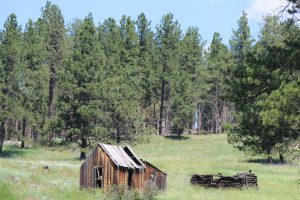 they were left to rot. Of course, the Black Hills is rich in gold rush history, so a ghost town or tow makes perfect sense. We have driven through, and by some of them, and even passed through some while riding he 1880 Train, but for some reason, it didn’t occur to me that some of the old buildings we have hiked by could have been part of a ghost town, but looking back now, it makes perfect sense. I have often found myself wondering who lived there and what their lives might have been like back when the house was newly built. Still, it didn’t occur to me that it might be part of a ghost town. I guess that is because I always thought that all the ghost towns would be well documented with signs alerting the tourists to the site. In reality, those signs would be placed by the town’s owner, who was trying to make a buck by romanticizing the site…and that’s ok too, but that doesn’t mean that every ghost town was so well documented. In reality, it’s the ghost towns that are less documented that hold the most intrigue, because much less is known about them.
they were left to rot. Of course, the Black Hills is rich in gold rush history, so a ghost town or tow makes perfect sense. We have driven through, and by some of them, and even passed through some while riding he 1880 Train, but for some reason, it didn’t occur to me that some of the old buildings we have hiked by could have been part of a ghost town, but looking back now, it makes perfect sense. I have often found myself wondering who lived there and what their lives might have been like back when the house was newly built. Still, it didn’t occur to me that it might be part of a ghost town. I guess that is because I always thought that all the ghost towns would be well documented with signs alerting the tourists to the site. In reality, those signs would be placed by the town’s owner, who was trying to make a buck by romanticizing the site…and that’s ok too, but that doesn’t mean that every ghost town was so well documented. In reality, it’s the ghost towns that are less documented that hold the most intrigue, because much less is known about them.
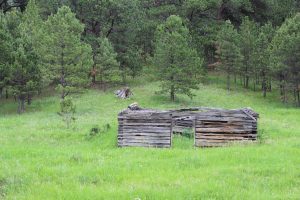 I think that the next time we hike and find ourselves passing by an old rotting building, that I will feel much different about the place than I did in the past. I think I will still wonder about who lived there, but also about whether or not it was a ghost town that once sprung up, and prospered, only to be choked out when hard times hit and the people who lived there moved on in search of a better life. That was, after all, the fate of every ghost town. It was a town that sprung up with the promise of becoming a bustling city, but it was in the wrong place, and life could not be sustained there, so eventually it withered and died off, leaving only the buildings to tell of its presence, and then only to those who happened to pass by.
I think that the next time we hike and find ourselves passing by an old rotting building, that I will feel much different about the place than I did in the past. I think I will still wonder about who lived there, but also about whether or not it was a ghost town that once sprung up, and prospered, only to be choked out when hard times hit and the people who lived there moved on in search of a better life. That was, after all, the fate of every ghost town. It was a town that sprung up with the promise of becoming a bustling city, but it was in the wrong place, and life could not be sustained there, so eventually it withered and died off, leaving only the buildings to tell of its presence, and then only to those who happened to pass by.
 Anytime a group of people goes on strike, there are side effects that go beyond the management having to do more work. One of the industries in which a strike can have devastating side effects is the airline industry. When air traffic controllers strike, and the people filling in for them are not used to doing that job, even if they are trained, things can get out of hand quickly. They are likely understaffed, and stressed, but you can’t let these planes fly without guidance, so you use people in management, who probably haven’t done this work in a long time. Such was the case on March 5, 1973, over France when two Spanish aircraft, a DC9 and a Coronado 990 collided 27,000 feet above Nantes, in western France.
Anytime a group of people goes on strike, there are side effects that go beyond the management having to do more work. One of the industries in which a strike can have devastating side effects is the airline industry. When air traffic controllers strike, and the people filling in for them are not used to doing that job, even if they are trained, things can get out of hand quickly. They are likely understaffed, and stressed, but you can’t let these planes fly without guidance, so you use people in management, who probably haven’t done this work in a long time. Such was the case on March 5, 1973, over France when two Spanish aircraft, a DC9 and a Coronado 990 collided 27,000 feet above Nantes, in western France.
Sixty eight people were killed when the two Spanish aircraft collided in mid-air over France that morning,  where air traffic controllers are on strike. The dead, who included a two year old child and 47 Britons, were on board a Spanish Airlines DC9 from Palma, Majorca to London. Eye witnesses said that the DC9 exploded and broke up in mid-air following the collision. Max Chevalier, British Honorary vice-consul at Nantes, said, “Suddenly a streak of red light appeared and part of the aircraft came down with bodies flying out. It was a horrible sight.”
where air traffic controllers are on strike. The dead, who included a two year old child and 47 Britons, were on board a Spanish Airlines DC9 from Palma, Majorca to London. Eye witnesses said that the DC9 exploded and broke up in mid-air following the collision. Max Chevalier, British Honorary vice-consul at Nantes, said, “Suddenly a streak of red light appeared and part of the aircraft came down with bodies flying out. It was a horrible sight.”
The pilot of the Coronado 990, Captain Antonio Arenas-Rodriguez, was able to land his damaged aircraft safely at a military airfield in Cognac. All 108 people on board survived without injury. A passenger on board the Coronado aircraft, Leonard Wareham, 59, who lives in Madrid, said, “We were sitting on the port side of the aircraft. My wife had the window seat. There was an enormous bump and then everything seemed to fall about. No-one knew what was happening except that the aircraft was falling fast. The next thing I  noticed was that a French fighter plane was flying around us and evidently he guided us in to land.”
noticed was that a French fighter plane was flying around us and evidently he guided us in to land.”
At least 16 airlines, including British European Airlines (BEA) and Caledonian, cancelled flights over France following news of the accident. Members of the French Civilian Air Controllers Association (SNCTA), have been on strike illegally since February 20, 1973 hoping to gain improved pension benefits and obtain the right to strike which was outlawed for air traffic controllers in 1964. Military air traffic controllers were put in place to operate France’s air control system on February 26.
 My sister-in-law, Rachel Schulenberg is a sweet girl, who is a great mom. Her children may have had some difficult times in their lives, but they can always count on their mom to be their biggest supporter. I don’t think any child lives their whole life without some difficulties, some bigger than others, but all difficult. Without the support and encouragement of their parents, some of those times can destroy the life of the child. Rachel has spent at least part of their lives being a single mom, at least until she met my brother-in-law, Ron. Now they work together to be a support system for their kids. I won’t go into all the ways Rachel has been a support system for her kids, because anyone who knows her is aware of all that has transpired.
My sister-in-law, Rachel Schulenberg is a sweet girl, who is a great mom. Her children may have had some difficult times in their lives, but they can always count on their mom to be their biggest supporter. I don’t think any child lives their whole life without some difficulties, some bigger than others, but all difficult. Without the support and encouragement of their parents, some of those times can destroy the life of the child. Rachel has spent at least part of their lives being a single mom, at least until she met my brother-in-law, Ron. Now they work together to be a support system for their kids. I won’t go into all the ways Rachel has been a support system for her kids, because anyone who knows her is aware of all that has transpired.
For Rachel, her three children are her treasures, as are her two grandchildren. She loves being a mom and grandma. And of course, she  loves being married to Ron. They are very compatible, and I believe that each of them is just what the other had been looking for all their lives. They have like interests and goals and they are both heading in the same direction. And they both have a great sense of humor. They love to goof off. Ron was never truly happy until he met Rachel. It was a match made in Heaven and one that will last a lifetime.
loves being married to Ron. They are very compatible, and I believe that each of them is just what the other had been looking for all their lives. They have like interests and goals and they are both heading in the same direction. And they both have a great sense of humor. They love to goof off. Ron was never truly happy until he met Rachel. It was a match made in Heaven and one that will last a lifetime.
One of the favorite things for Rachel and Ron to do is to go camping. They would probably stay in the mountains forever, if they could. It’s just not  something most of us can manage, and so we go to work. Ron and Rachel have a place north of Casper with about 5 acres. Living on 5 acres in the country is nice most of the time, but not so much when the weather causes the roads tend to turn into a mud pit. Nevertheless, it’s home an they have built a happy life there. Rachel loves the home she and Ron have there. She and her son, Tucker love to make specials welcome home things for Ron…or at least Rachel helps Tucker make special welcome home surprises for Ron. They both love Ron so much and they love the life they have built. Today is Rachel’s birthday. Happy birthday Rachel!! Have a great day!! We love you!
something most of us can manage, and so we go to work. Ron and Rachel have a place north of Casper with about 5 acres. Living on 5 acres in the country is nice most of the time, but not so much when the weather causes the roads tend to turn into a mud pit. Nevertheless, it’s home an they have built a happy life there. Rachel loves the home she and Ron have there. She and her son, Tucker love to make specials welcome home things for Ron…or at least Rachel helps Tucker make special welcome home surprises for Ron. They both love Ron so much and they love the life they have built. Today is Rachel’s birthday. Happy birthday Rachel!! Have a great day!! We love you!

 My grand niece, Kaytlyn Griffith is a big fan of the snow. In fact, you might call her a Snow Baby, except that at 10 years old, she isn’t really a baby anymore. When you hit those double digits, you can’t be called a baby. Nevertheless, Kaytlyn lives the snow. When it’s snowy out, Kaytlyn is outside in it. Last weekend, when Powell got a lot of snow, her dad, Josh Griffith we outside and shoveled all the snow he could find into a big pile, and Kaytlyn spent all day playing with their dog, Trump on the pile and sledding down it. As far as Kaytlyn is concerned, her dad is the greatest thing since sliced bread. Now I think, that given Kaytlyn’s Snow Baby tendencies, that her dad needs to bring in a bunch of dirt this summer and build her a snow sledding hill for next year, because her mom, Susan Griffith was telling me a couple of days ago that it would be great if they had a sledding hill nearby, and since they have ended ugh land for it, they might as well
My grand niece, Kaytlyn Griffith is a big fan of the snow. In fact, you might call her a Snow Baby, except that at 10 years old, she isn’t really a baby anymore. When you hit those double digits, you can’t be called a baby. Nevertheless, Kaytlyn lives the snow. When it’s snowy out, Kaytlyn is outside in it. Last weekend, when Powell got a lot of snow, her dad, Josh Griffith we outside and shoveled all the snow he could find into a big pile, and Kaytlyn spent all day playing with their dog, Trump on the pile and sledding down it. As far as Kaytlyn is concerned, her dad is the greatest thing since sliced bread. Now I think, that given Kaytlyn’s Snow Baby tendencies, that her dad needs to bring in a bunch of dirt this summer and build her a snow sledding hill for next year, because her mom, Susan Griffith was telling me a couple of days ago that it would be great if they had a sledding hill nearby, and since they have ended ugh land for it, they might as well  have a sledding hill. Of course, Kaytlyn isn’t so snow crazy that she really wants to be out in it when it’s -20°, but there is a point when the temperature starts to rise and it’s finally above 0°, and everyone starts to feel happy again. That’s when Kaytlyn has to get outside in the snow. That’s a true Snow Baby.
have a sledding hill. Of course, Kaytlyn isn’t so snow crazy that she really wants to be out in it when it’s -20°, but there is a point when the temperature starts to rise and it’s finally above 0°, and everyone starts to feel happy again. That’s when Kaytlyn has to get outside in the snow. That’s a true Snow Baby.
Kaytlyn and her dog, Trump are best friends. Trump is an 80 pound teddy bear. He absolutely loves Kaytlyn. They play outside together and hang out together inside too. Next to Kaytlyn, Trump looks huge. Nevertheless, he would do anything for Kaytlyn. Trump is a special dog. Trump is deaf, but that doesn’t make Trump a dumb dog. They family has taught Trump sign language so they can communicate, and it has worked. I find that amazing.

 Kaytlyn won three awards in one day at her school. That is a pretty big deal, and quite uncommon. She is a great friend to other kids at school. Her parents have really pushed the anti-bullying techniques, because they want her to help make a difference in the life of other people. I think that maybe the time spent with Trump has helped in that area too. Kaytlyn has learned that just because someone is different, whether it is deafness, shyness, or some other disability, doesn’t mean that there is something wrong with them, and that they still have value, and should be treated with respect. Kaytlyn knows these things because of the wonderful upbringing she has received from her parents. Today is Kaytlyn’ s 10th birthday. Happy birthday Kaytlyn!! Have a great day!! We love you!!
Kaytlyn won three awards in one day at her school. That is a pretty big deal, and quite uncommon. She is a great friend to other kids at school. Her parents have really pushed the anti-bullying techniques, because they want her to help make a difference in the life of other people. I think that maybe the time spent with Trump has helped in that area too. Kaytlyn has learned that just because someone is different, whether it is deafness, shyness, or some other disability, doesn’t mean that there is something wrong with them, and that they still have value, and should be treated with respect. Kaytlyn knows these things because of the wonderful upbringing she has received from her parents. Today is Kaytlyn’ s 10th birthday. Happy birthday Kaytlyn!! Have a great day!! We love you!!

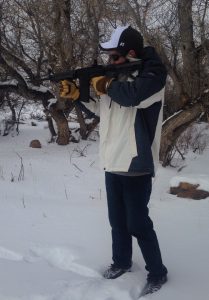 My grand nephew, Jake Collett is an electrician for H.I. Power. He really loves his work and that is a big plus, but of course his work is not his life. Like most of us, Jake’s career is a means to a better life. Jake is married to my grand niece, Katy, and they are very well suited to each other. They like the same activities, so they are going the same direction in their lives. That makes for great compatability in life.
My grand nephew, Jake Collett is an electrician for H.I. Power. He really loves his work and that is a big plus, but of course his work is not his life. Like most of us, Jake’s career is a means to a better life. Jake is married to my grand niece, Katy, and they are very well suited to each other. They like the same activities, so they are going the same direction in their lives. That makes for great compatability in life.
Like many Wyoming boys, Jake’s free time is spent doing all the boy stuff. He loves to target practice with his guns, and from what I hear, he’s pretty accurate. That’s what you want. Guns are not too much good if you can’t hit anything, and these days you never know when you will need to protect yourself and your family. And of course, living in Wyoming usually means that you like to hunt, and you can’t bag your game if you can’t hit it.
Jake also loves dirt bikes and 4-wheelers and loves to go riding with his wife Katy, and his dogs Bubba and 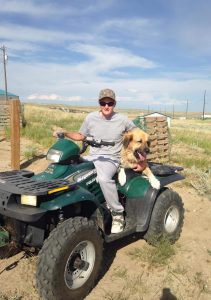
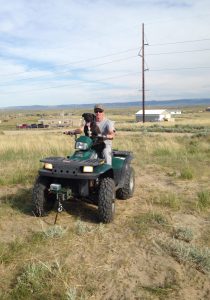 Sheiba. The dogs are somewhat like kids, in that they are what to go riding with daddy whenever he will take them…which is most of the time. Jake and Katy bought a piece of land in the country where they and their dogs can roam free. They don’t have to take a long drive to get to a place where they can ride their 4-wheelers. They just go outside, and they are set to go. Of course, they also love riding and hiking in the many beautiful places that Wyoming has to offer, because it gives them a chance to enjoy the beautiful scenery we have here. Katy and Jake are building a beautiful life for themselves, and I know that there are many good things to come. They are totally happy together. Today is Jake’s birthday. Happy birthday Jake!! Have a great day!! We love you!!
Sheiba. The dogs are somewhat like kids, in that they are what to go riding with daddy whenever he will take them…which is most of the time. Jake and Katy bought a piece of land in the country where they and their dogs can roam free. They don’t have to take a long drive to get to a place where they can ride their 4-wheelers. They just go outside, and they are set to go. Of course, they also love riding and hiking in the many beautiful places that Wyoming has to offer, because it gives them a chance to enjoy the beautiful scenery we have here. Katy and Jake are building a beautiful life for themselves, and I know that there are many good things to come. They are totally happy together. Today is Jake’s birthday. Happy birthday Jake!! Have a great day!! We love you!!

